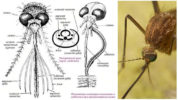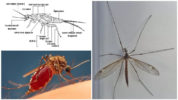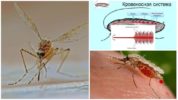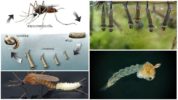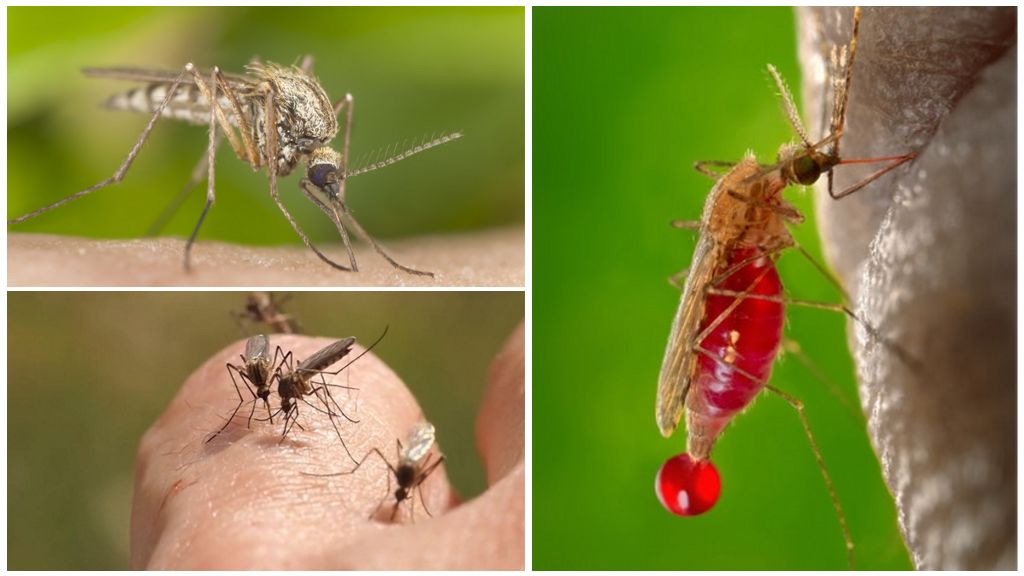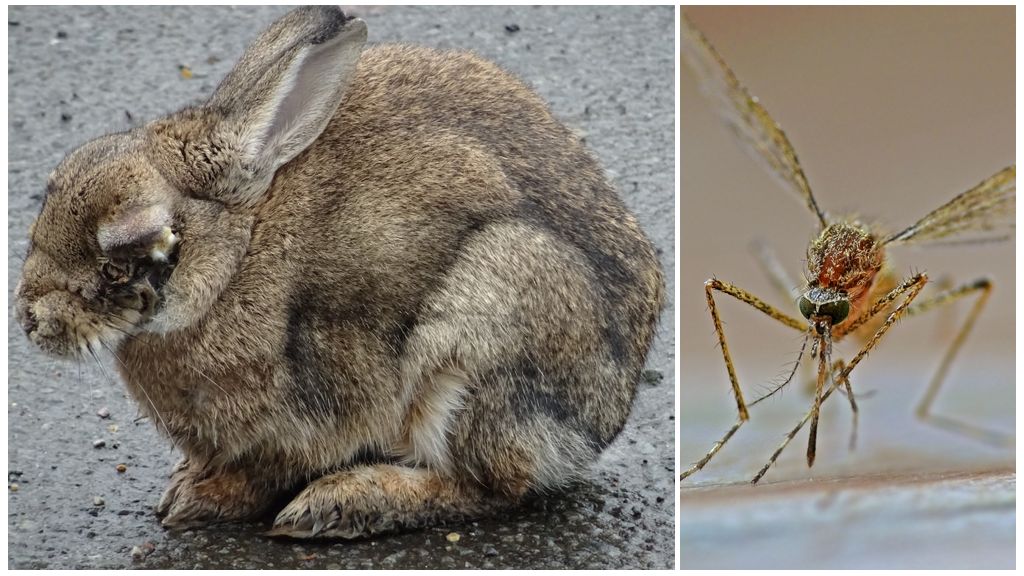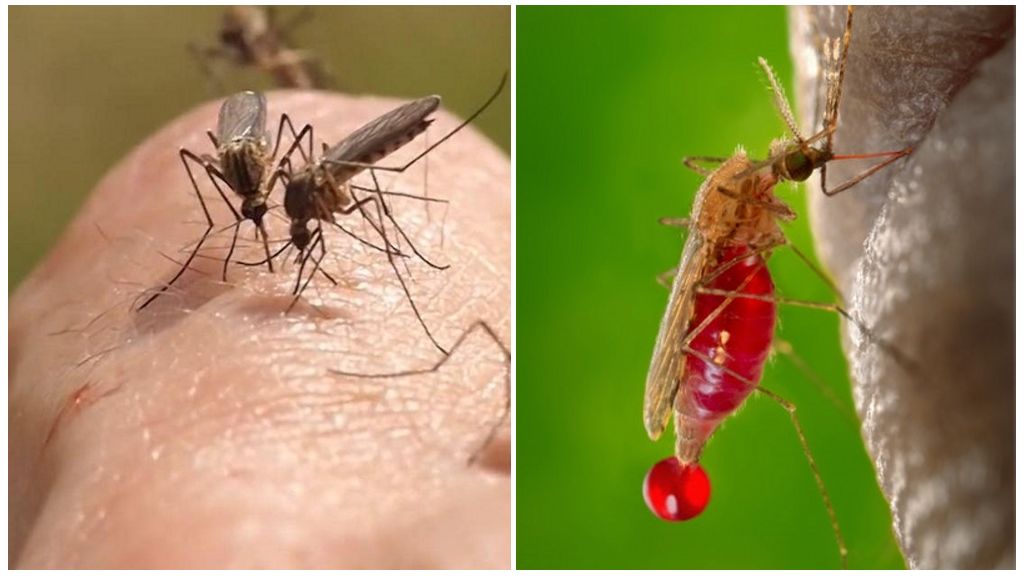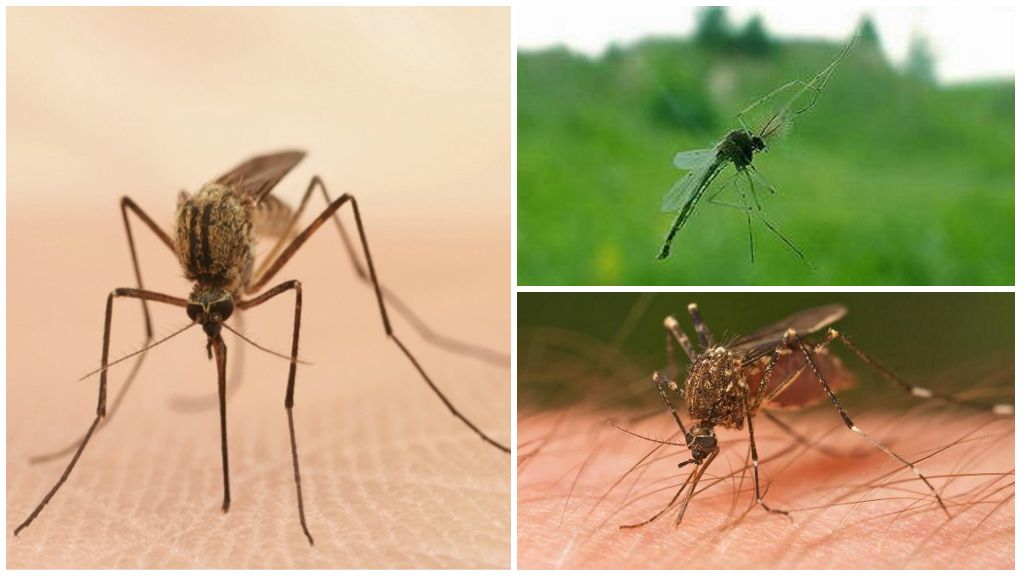- The structure of the head of a mosquito
- Mosquito anatomy
- Mosquito structure
- Mosquito life cycle
If you look closely, everyone is so bored mosquitoes turn out to be very interesting insects. Not representing anything special, the bloodsucker actually has a rather complicated structure of the body and internal organs. There are many types of these diptera insects, some of which are not dangerous to humans: large centipedes, mosquito bells. Part of the insects is carriers of dangerous diseases. But all species have a similar body structure. Even mosquitoes still do not know everything about mosquitoes.
Mosquito anatomy
Although about habits, lifestyle and reproduction of mosquitoes biologists still do not know enough, but how the mosquito is arranged is already well known. It turned out that such a "primitive" creature already has almost all the internal organs that higher mammals have.
The morphological description of mosquitoes is similar. All insects of this family have a thin body, the length of which varies depending on the species and can be from 4 to 14 mm. All mosquitoes have long legs and a pair of transparent narrow wings. The wingspan also depending on the species can be from 5 mm to 3 cm. The main types of coloring:
- yellow;
- Gray;
- brown.
Among mosquitoes, there are species with a black or green color.
Body structure
A mosquito consists of a head, chest and abdomen. The chest of insects is wider than the abdomen consisting of 10 segments. The mosquito has 3 pairs of paws attached to the chest.
On a note!
After feeding, the abdomen swells, becoming wider than the chest.
Head
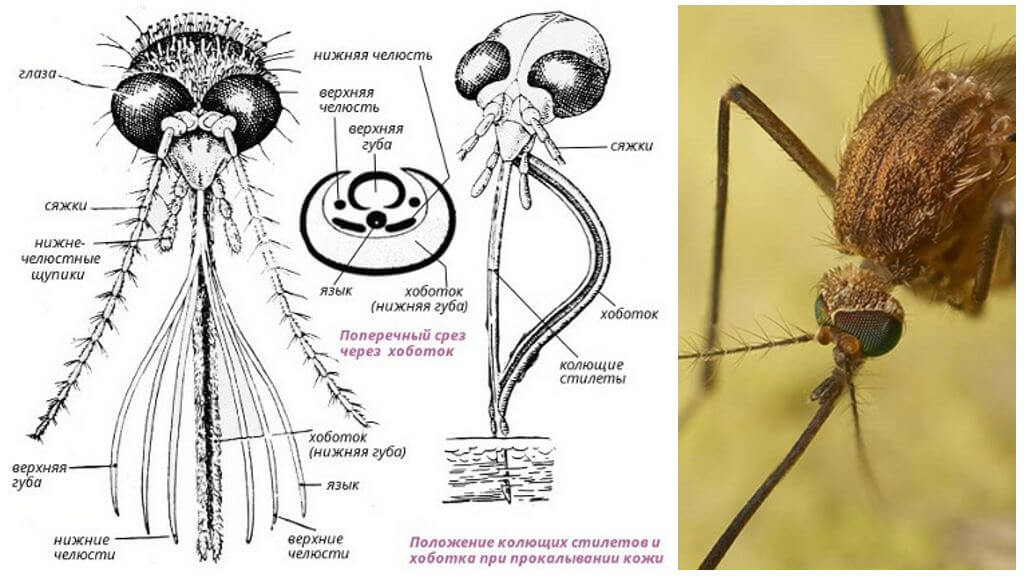
On the head are located:
- faceted eyes;
- antennae;
- oral apparatus.
The facet device of the eyes provides the bloodsucker with a circular view and helps to avoid danger. Mosquitoes have infrared vision, so they can see the approaching danger in the form of the palm of their hand.
Antennae consist of 15 segments, the first of them are quite wide. The first segment is attached directly to the head. The second is the so-called Johnston organ, which supposedly acts as a mosquito ear.
Interesting!
In mosquitoes, the female from the male is most easily distinguished by the structure of the antennae.
The segments following the first two are called the scourge. The segments of the scourge in the female have almost the same cylindrical shape. They have a few short hairs. In the male, the segments of the scourge are conical, and the hairs are longer and thicker. This is noticeable even without a microscope, since the antennae of the male seem fluffy. Since the structure of the mosquito even today has not yet been fully studied, it is suggested that the antennae serve as mosquitoes for analyzing the movement of air and partially replace their missing nose.
The mouthpart of the mosquito is piercing-sucking. It consists of 3 pairs of sharp needles covered with a flexible case. 2 pairs are stilettos. The extreme ones are also equipped with a “nail file” to facilitate piercing the skin. There are also chitinous bristles that play the role of teeth of a mosquito. The inner pair is hollow tubes, through one of which the insect drinks blood, and through the other injects its poison. A flexible case has no function other than protecting the mosquito's trunk from damage.
On a note!
But such a complex device has the proboscis of a mosquito only in the female.The male’s oral apparatus is underdeveloped, because of which it can eat exclusively nectar of flowers.
With a very small head, the brain of a mosquito is large enough for an insect, but is formed by the connection of two longitudinal nerve trunks. Trunks run parallel to each other along the lower surface of the chest and abdomen, connecting in the head above the pharynx. The main brain is supplemented by ganglia. These are large nerve nodes located in each segment of the mosquito's chest and its abdomen. It is the ganglia that coordinate the work of all organs of the insect. From these nerve nodes to organs, nerve endings diverge.
Chest
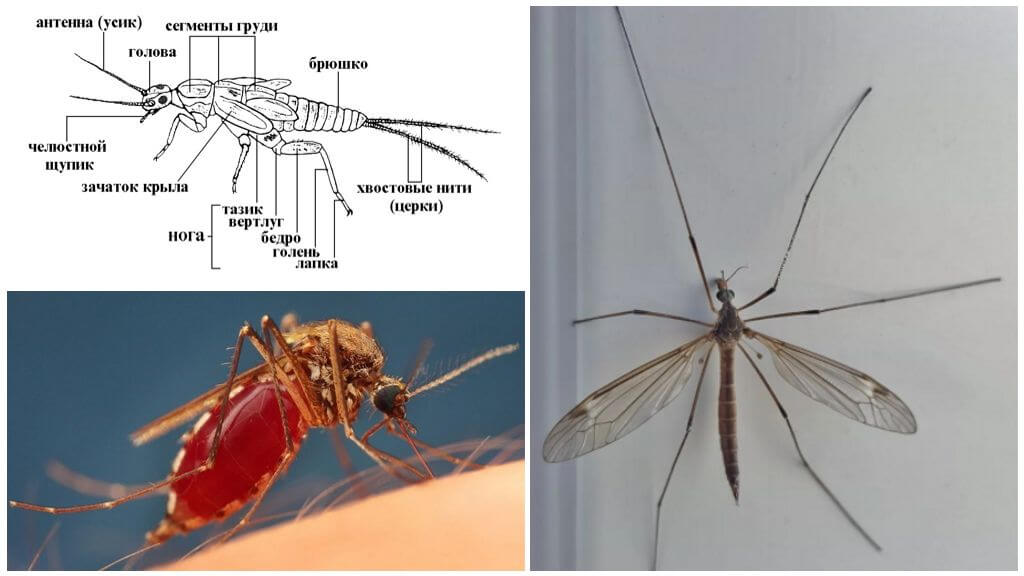
It looks like a single array, but actually consists of 3 unevenly developed segments:
- prothorax;
- mid chest;
- the rear chest.
The most developed is the middle part, to which the wings of a mosquito are attached. She carries all the flying muscles.
The long neck of the insect is formed due to the prothorax. The average is responsible for the possibility of a bloodsucker to fly and breathing. It contains the anterior spiracle of the mosquito. The metanotum is relatively poorly developed. Its main purpose is to provide breathing. It has the posterior spiracle.
Mosquito paws are attached to the segments of the chest. Their 3 pairs by the number of segments. Each foot has 5 segments. The latter is equipped with a suction cup and claws, allowing the insect to stay on vertical surfaces and "hang upside down" on the ceiling.
Interesting!
The legs of mosquitoes are longer than the body, and the rear pair is distinguished by a special length. Why the insect such a device, similar to the structure of the paws of a water strider, is incomprehensible. But this may be atavism.
The bloodsucker used to have 4 wings. Today, only one pair of workers remains. From the second pair there are only rudiments-buzzers, due to which the females publish their characteristic squeak.
Interesting!
Males do not make sounds.
The wing is a transparent oval-elongated plate consisting of frame veins and a membrane between them. The wings are covered with small scales. Mostly flakes are transparent. But bloodsuckers with colored scales come across. In this case, the accumulation of colored scales forms a stain. In “green” and “black” colors, such spots form a pattern.
Abdomen
Consists of 10 segments. The internal structure of the abdomen is more complicated than just a reservoir for drunk blood. It contains:
- a significant part of the digestive tract;
- appendages to the digestive tract;
- heart.
Appendages (goiters) take the place of the main tract while it is empty. When the stomach is filled with blood, the insect releases the goiter from its contents.
Digestive tract
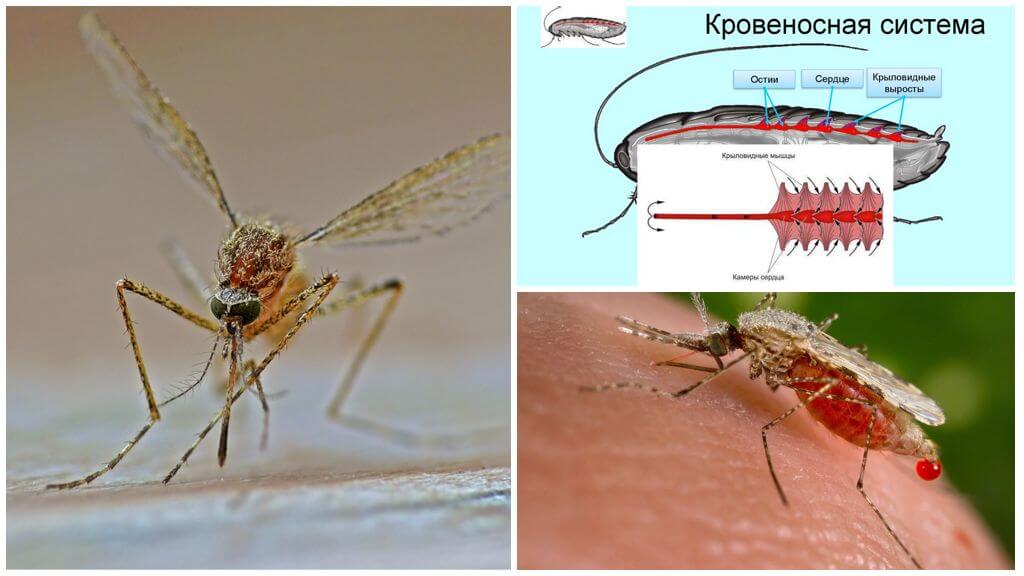
Mosquitoes familiar to us begin right from the head. The mouth of the bloodsucker is connected to the anterior intestine, which includes the pharynx, which has two extensions: to the "brain" and after it. The anterior intestine has several appendages: 3 epididymis and 2 salivary glands. Neither the foregut nor the esophageal appendages perform digestive functions. Appendages serve the insect to ensure independence from water and food. These are “food stores” with carbohydrate and water reserves.
When the mosquito needs nutrition, “stockpiles” enter the stomach, where their assimilation begins. The hind gut consists of a thin and straight. Almost the entire digestive tract is located in the abdomen of a mosquito.
Circulatory system
Insects do not have a closed circulatory system, and blood and lymph are pumped through the work of the heart and diaphragm.
The mosquito’s heart is absent in the usual sense. It is devoid of chambers and is a muscular tube located in the abdomen between the 1st and 7th segments. The heart can drive blood from the front end of the insect to the back or vice versa.
At the border with the chest, the heart passes into the aorta, which passes through both front sections and opens into the head cavity.
Interesting!
Own blood of these insects is colorless.
Lifestyle
Mosquito - an insect, without fail passing in the development of the aquatic period of life. Mosquitoes have four stages of development:
- Egg.
- Larva.
- Dolly.
- Imago
In all species, the first three stages occur either in water or in waterlogged soil on the banks of water bodies.
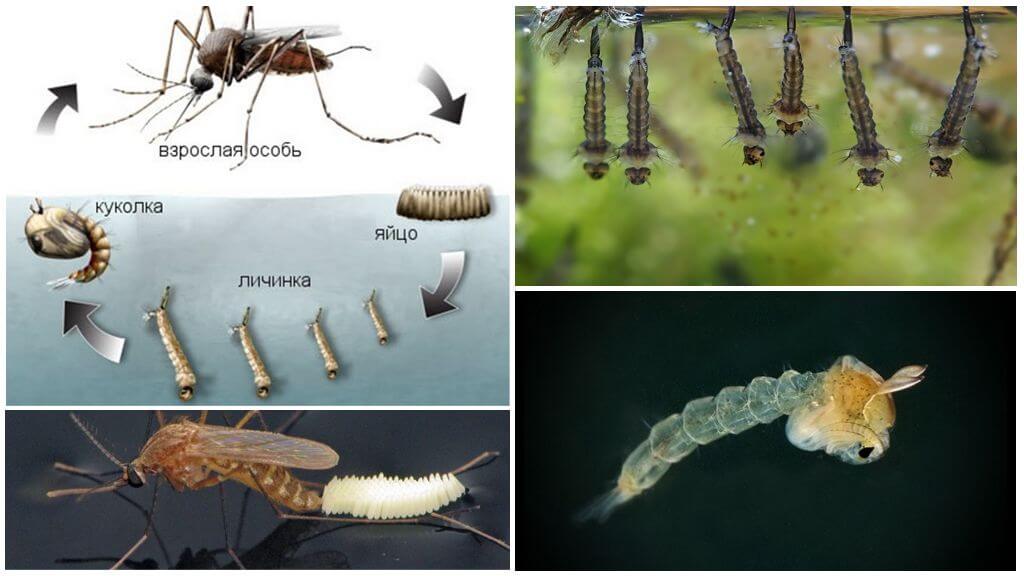
Larva structure
Coming out of eggs larvae different species differ from each other in the shape of the head. The heads that feed from the surface of water bodies are elongated and narrow. When fed by plankton or bottom sediments, the head of the larva will be more developed in width than in length. Predators have a special head structure that is different from the previous two.
The eyes are located on the sides of the head of the larvae. The mouth, depending on the type of food, can be a scrubbing or suction type. In predatory species, the oral apparatus is adapted for catching and chewing prey. Chest plates fused together. The abdomen consists of 9 segments.
The digestive tract in larvae is an almost straight tube. Digestion of food occurs in the middle section of the intestine. The digestive tract is supplemented by a pair of salivary glands and intestinal appendages.
Doll
The developed larva passes to the next stage: pupation. The pupa is lighter than water due to the large number of air chambers. At this time, already almost formed small mosquitoes are at the greatest risk, as they are helpless fish food.
The adult insect hatched from the pupa dries up and sets off to search for a mate for breeding.
Breeding
Mosquitoes eat nectar of flowers. Even the females. But to females for a successful and plentiful oviposition blood is needed. This is what causes their “bloodthirstiness.”
The female mosquito (squeak) attracts the male to itself with a characteristic sound. It was for this that she still had the hummer. It does not buzz, but it beeps solely because of its size. Too small wings cannot produce a bass boom. If a squeak is heard in a swarm of mosquitoes, you can be sure that there are also blood-thirsty females.
To tell everything about mosquitoes, even scientists have not yet been able to write dissertations. However, many interesting facts about mosquitoes and a general idea of how a bloodsucker keeps you awake, and why it keeps you awake with your squeak, you can get.
